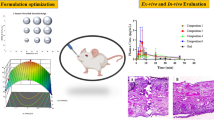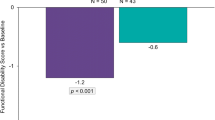Abstract
Background and objective: Oral zolmitriptan is highly effective in the acute treatment of migraine. However, nausea and vomiting during attacks may limit the usefulness of oral medications. An alternative, nasal spray, formulation has been developed that demonstrates good efficacy, high tolerability and a very fast onset of action. This study assessed the pharmacokinetics and bioavailability of zolmitriptan and its active metabolite 183C91 in healthy Japanese subjects following single-dose (2.5 or 5mg) oral or intranasal administration.
Methods: This was a single-centre, open-label, randomised, crossover study. Forty-eight subjects each received one oral and one intranasal dose of 2.5 or 5mg zolmitriptan, with a 72-hour washout period between doses. Blood was drawn at various timepoints from 2 minutes to 15 hours post-dose and urine was collected over the course of the study; samples were analysed for zolmitriptan and 183C91, from which pharmacokinetic parameters were calculated.
Results: Zolmitriptan was detected in plasma 2 minutes after intranasal administration in the majority of subjects (∼75%) compared with 10 minutes after oral administration. The intranasal : tablet ratio for zolmitriptan area under the concentration-time curve from time zero to infinity was 0.924 (90% CI 0.826, 1.033) and 0.960 (90% CI 0.865, 1.066) for the 2.5 and 5mg doses, respectively. Other pharmacokinetic parameters were similar between the two formulations. While 183C91 appeared in the plasma concurrently to zolmitriptan after oral dosing, its appearance was delayed to approximately 30 minutes after intranasal dosing. Zolmitriptan was safe and well tolerated at both doses.
Conclusions: The rapid absorption of zolmitriptan nasal spray may explain the faster relief from migraine reported in patients compared with oral zolmitriptan.




Similar content being viewed by others
Notes
The use of trade names is for product identification purposes only and does not imply endorsement.
References
Spencer CM, Gunasekara NS, Hills C. Zolmitriptan: a review of its use in migraine. Drugs 1999; 58: 347–74
Volans GN. Migraine and drug absorption. Clin Pharmacokinet 1978; 3: 313–8
Yates R, Nairn K, Dixon R, et al. Pharmacokinetics, dose proportionality, and tolerability of single and repeat doses of a nasal spray formulation of zolmitriptan in healthy volunteers. J Clin Pharmacol 2002; 42: 1244–50
Yates R, Nairn K, Dixon R, et al. Preliminary studies of the pharmacokinetics and tolerability of zolmitriptan nasal spray in healthy volunteers. J Clin Pharmacol 2002; 42: 1237–43
Charlesworth BR, Dowson AJ, Purdy A, et al. Speed of onset and efficacy of zolmitriptan nasal spray in the acute treatment of migraine: a randomised, double-blind, placebo-controlled, dose-ranging study versus zolmitriptan tablet. CNS Drugs 2003; 17: 653–67
Sakai F, Igarashi H. Prevalence of migraine in Japan: a nationwide survey. Cephalgia 1997; 17: 15–22
Zhou HH, Liu ZQ. Ethnic differences in drug metabolism. Clin Chem Lab Med 2000; 38: 899–903
Benowitz NL, Pérez-Stable EJ, Herrera B, et al. Slower metabolism and reduced intake of nicotine from cigarette smoking in Chinese-Americans. J Natl Cancer Inst 2002; 94(2): 108–15
Yates RA, Tateno M, Nairn K, et al. The pharmacokinetics of the antimigraine compound zolmitriptan in Japanese and Caucasian subjects. Eur J Clin Pharmacol 2002; 58(4): 247–52
Kågedal M, Zingmark P-H, Hedlund C, et al. True nasopharyngeal absorption of zolmitriptan following administration of zolmitriptan nasal spray in healthy male volunteers. Am J Drug Deliv. In press
Dixon R, Engleman K, Kemp J, et al. A comparison of the pharmacokinetics and tolerability of the novel antimigraine compound zolmitriptan in adolescents and adults. J Child Adolesc Psychopharmacol 1999; 9: 35–42
Dowson AJ, Charlesworth BR, Green J, et al. Zolmitriptan nasal spray exhibits good long-term safety and tolerability in migraine: results of the INDEX trial. Headache 2005; 45: 17–24
Gawel M, Aschoff J, May A, et al. Zolmitriptan 5mg nasal spray: efficacy and onset of action in the acute treatment of migraine: results from phase 1 of the REALIZE study. Headache 2005; 45: 7–16
Dixon R, Warrander A. The clinical pharmacokinetics of zolmitriptan. Cephalalgia 1997; 17 Suppl. 18: 15–20
US Food and Drug Administration Center for Drug Evaluation and Research. Approved drug products with therapeutic equivalence evaluations (Orange Book), 24th Edition; 2004 [online]. Available from URL: {rs http://www.fda.gov/cder/orange/ URL}
Sakai F, Iwata M, Tashiro K, et al. Zolmitriptan is effective and well tolerated in Japanese patients with migraine: a dose-response study. Cephalalgia 2002; 22: 376–83
Rang HP, Dale MM, Ritter JM. Pharmacology. 4th ed. Edinburgh: Churchill Livingstone, 1999
Bartoli A, Xiaodong S, Gatti G, et al. The influence of ethnic factors and gender on CYP1A2-mediated drug disposition: a comparative study in Caucasian and Chinese subjects using phenacetin as a marker substrate. Ther Drug Monit 1996; 18: 586–91
Carrillo JA, Benitez J. CYP1A2 activity, gender and smoking as variables influencing the toxicity of caffeine. Br J Clin Pharmacol 1996; 41: 605–8
Carrillo JA, Herraiz AG, Ramos SI, et al. Role of the smoking-induced cytochrome P450 (CYP)1A2 and polymorphic CYP2D6 in steady-state concentration of olanzapine. J Clin Psychopharmacol 2003; 23: 119–27
Ou-Yang DS, Huang SL, Wang W, et al. Phenotypic polymorphism and gender-related differences of CYP1A2 activity in a Chinese population. Br J Clin Pharmacol 2000; 49: 145–51
Acknowledgements
The study was supported by AstraZeneca.
Drs Uemura, Mitaniyama, Kaneko, Ninomiya, Nakamura and Tateno have received research funding and honoraria from AstraZeneca. Dr Onishi is an employee of AstraZeneca.
Author information
Authors and Affiliations
Corresponding author
Rights and permissions
About this article
Cite this article
Uemura, N., Onishi, T., Mitaniyama, A. et al. Bioequivalence and Rapid Absorption of Zolmitriptan Nasal Spray Compared with Oral Tablets in Healthy Japanese Subjects. Clin. Drug Investig. 25, 199–208 (2005). https://doi.org/10.2165/00044011-200525030-00006
Published:
Issue Date:
DOI: https://doi.org/10.2165/00044011-200525030-00006




